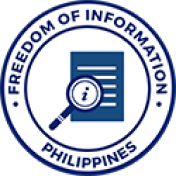The Department of Health (DOH) and its partners have been preparing for the monkeypox virus ever since an uptick in cases was reported in other countries in May 2022. Now that World Health Organization (WHO) Director-General Dr. Tedros Adhanom Ghebreyesus has declared monkeypox to be a public health emergency of international concern (PHEIC), WHO has issued Temporary Recommendations (TRs) to guide the response. For countries like the Philippines with no history of monkeypox in humans, these include the following:
1. Activate multi-sectoral coordination mechanisms for readiness and response, to stop human to human transmission;
2. Avoid stigmatization and discrimination against any individual or population group that may be affected, to help prevent further undetected transmission;
3. Intensify epidemiology and disease surveillance;
4. Intensify detection capacity by raising awareness and training health workers;
5. Raise awareness about virus transmission, related prevention and protective measures, and symptoms and signs among communities that are currently affected as well as among other population groups that may be at risk;
6. Engage key community-based groups and civil society networks to increase provision of reliable and factual information;
7. Focus risk communication and community support efforts on settings and venues where close contact takes place;
8. Immediately report to WHO probable and confirmed cases of monkeypox; and
9. Implement all actions necessary to be ready to apply or continue applying further Temporary Recommendations for countries with detected cases, should there be a first-time detection of one or more suspected, probable or confirmed cases of monkeypox.
Aligned with Temporary Recommendation (TR) 1, the Department of Health (DOH) as current Chair convened the Philippine Inter-agency Committee on Zoonosis (PhilCZ) last May 27, 2022. PhilCZ members include the DOH, Department of Agriculture (DA), Department of Environment and Natural Resources (DENR) and their respective agencies as members.
Consistent with TRs 2 and 5, DOH has been carefully communicating the risk of monkeypox transmission along with other pertinent facts about its causative agent and clinical presentation. DOH emphasizes across all its guidelines and advisories that any individual can get monkeypox.
In support of TRs 3, 4, and 8, DOH immediately drafted, approved and circulated on May 24, 2022 interim technical guidelines for the implementation of monkeypox surveillance, screening, management, and infection control. The document (DOH Department Memorandum No. 2022-0220) includes case definitions and protocols as part of the Philippines’ response to monkeypox. Online town halls and meetings were conducted with health care workers, DOH regional offices, and local health officials in the same week. The DOH Research Institute for Tropical Medicine successfully optimized its Realtime PCR assay for detecting the monkeypox virus last June 20, 2022.
For TRs 6 and 7, DOH is currently working with local civil society organizations, community-based groups, social hygiene clinics and advocates to properly communicate the risk of monkeypox transmission among certain population groups without stigma. This is consistent with the evidence that anyone can get monkeypox, and we must all work together to prevent not just the disease but also stigma that may cause undetected transmission.
“Hanggang sa ngayon, wala pa rin pong nakitaan sa Pilipinas na pasok sa depenisyon ng isang suspect monkeypox case. Ang itsura ay karaniwang naipapaliwanag ng ibang mga sakit na kahawig ng monkeypox, ngunit hindi nito kapareho (Up to now, there has been no finding in the Philippines that fits the definition of a suspect monkeypox case. The clinical presentation is often explained by other diseases that look like monkeypox, but is not the same),” according to Dr. Maria Rosario Singh-Vergeire, Officer-in-Charge of the DOH. “The DOH will keep the Filipino public updated with factual information,” Usec. Vergeire added.
Related Press Releases


